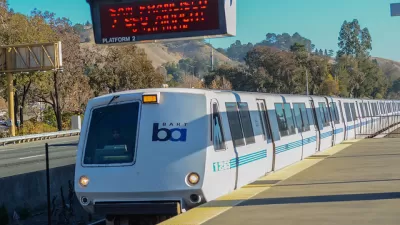In the Chicago suburb of Berwyn, Illinois, an iconic piece of public art featuring a 40-foot spear stabbing through a pileup of eight cars will soon be replaced with a Walgreens pharmacy.
In the Chicago suburb of Berwyn, Illinois, an iconic piece of public art featuring a 40-foot spear stabbing through a pileup of eight cars will soon be replaced with a Walgreens pharmacy.
The sculpture -- titled "The Spindle", but unofficially known as the "eight-car pileup" or the "car kabob" -- has towered over the parking lot of the Cermak Plaza Shopping Center since the cars were gored and hoisted in 1989. The piece has been neighbored by a number of retailers over the years. Its current backdrop is an outlet of the big box electronics retailer Circuit City and a huge store called Shoe Carnival, and by the end of the summer the site of the Spindle will become the 5,808th Walgreens Pharmacy in the United States.
The Spindle is most famous for its brief cameo role in an especially notable scene from the fine 1992 film "Wayne's World" (skip ahead to about 2:38 in the video), in which it serves as a poignant segway between the anthemic "Oh yeah/Oh yeah" section of Queen's "Bohemian Rhapsody" to the somber "Nothing really matters" finale.
The removal of the kabob has received coverage in the national press, which reports a sense of reluctance to remove the art as the city's mayor admits the unique "marketing power" of the sculpture. The city's website even features a photo of the Spindle in a section titled "Attractions and Visitor Info".
But the Spindle is not the only tourist draw in Cermak Plaza. The shopping center has also been the home to many other sculptures and public art works, as the plaza's owner happens to be a collector (the website Offbeat Travel has a more extensive history of the shopping center, its art, and its owner). The Oak Park (IL) Board of Realtors touts the plaza's artwork as a contributor to its success as a retail destination, but despite the sculpture's curiosity, it generates no tax revenue for the city. This is a shortcoming the new Walgreens Pharmacy will surely not suffer.
But will the Walgreens be able to replace the aesthetic value of the Spindle? Dustin Shuler, the artist who created the Spindle, thinks not. And judging by the plethora of retailers pictured in the Berwyn Development Corporation's panoramic photo survey of the area, another store is probably not a dire necessity.
Residents rallied for the sculpture's removal from the moment it was built, so the probability of massive public outcry over its replacement is low. Maybe it will be better for the city to not have a big metal spear next to its shopping center shooting through a bunch of old cars. Maybe the aesthetic value is zero in Berwyn, Illinois. Maybe this piece has served no purpose in its nearly 20-year lifetime. Maybe Walgreens is going to single-handedly revitalize the city and its proud people. I don't really know. But I do know that, in the end, this is a local decision, regardless of the sculpture's wider appeal and merit as a piece of public art in a world where creative expression is routinely trumped by the prospect of commerce. It might be easy for me, 2,000 miles away, to say that this public art deserves to be preserved (especially when the alternative is some cookie-cutter drug store), but when it comes down to it, the extra tax revenue generated by the drug store might just be a little more enticing. But only if you're lame.

Depopulation Patterns Get Weird
A recent ranking of “declining” cities heavily features some of the most expensive cities in the country — including New York City and a half-dozen in the San Francisco Bay Area.

California Exodus: Population Drops Below 39 Million
Never mind the 40 million that demographers predicted the Golden State would reach by 2018. The state's population dipped below 39 million to 38.965 million last July, according to Census data released in March, the lowest since 2015.

Chicago to Turn High-Rise Offices into Housing
Four commercial buildings in the Chicago Loop have been approved for redevelopment into housing in a bid to revitalize the city’s downtown post-pandemic.

Google Maps Introduces New Transit, EV Features
It will now be easier to find electric car charging stations and transit options.

Ohio Lawmakers Propose Incentivizing Housing Production
A proposed bill would take a carrot approach to stimulating housing production through a grant program that would reward cities that implement pro-housing policies.

Chicago Awarded $2M Reconnecting Communities Grant
Community advocates say the city’s plan may not do enough to reverse the negative impacts of a major expressway.
City of Costa Mesa
Licking County
Barrett Planning Group LLC
HUD's Office of Policy Development and Research
Mpact Transit + Community
HUD's Office of Policy Development and Research
City of Universal City TX
ULI Northwest Arkansas
Town of Zionsville
Write for Planetizen
Urban Design for Planners 1: Software Tools
This six-course series explores essential urban design concepts using open source software and equips planners with the tools they need to participate fully in the urban design process.
Planning for Universal Design
Learn the tools for implementing Universal Design in planning regulations.


























